
The Importance of a Good Webcam
In today's digital world, having a good web camera for your home office is no longer a luxury, it's a necessity. Whether it's for attending virtual meetings, presenting online webinars, or just staying connected with colleagues and clients, a high-quality webcam can significantly enhance your remote communication experience.
Essential Features of a Quality Web Camera
Working from home has become the new norm for many of us, and it's clear that this trend is here to stay. Have you ever been on a video call and thought to yourself, "Why does my camera make me look like a pixelated character from a 90s video game?" If you have, then you know the importance of a good web camera. Let's dive into what makes a web camera stand out, especially for those of us embracing the work-from-home lifestyle.
Resolution and Image Quality
Resolution and Image Quality: The cornerstone of a great web camera. Imagine trying to enjoy a beautiful sunset, but through a foggy window. That's what a low-resolution camera does to your image. High resolution means crisp, clear images that make you look your best.

Frame Rate and Smoothness
Frame Rate and Smoothness: Ever watched a movie where the motion is so choppy it's like flipping through a book? A high frame rate keeps your movements smooth and natural, avoiding that awkward robotic look.

Autofocus and Light Adjustment
Autofocus and Light Adjustment: Ever moved a bit only to become a blurry mess? Autofocus keeps you in sharp focus. And let's talk about light adjustment – it's like having your own personal lighting crew, ensuring you're not too bright or too dark.

Additional Features to Consider
Beyond the basics, look for features like wide-angle lenses, noise-reducing microphones, and privacy shutters. These extras can elevate your video calls to a professional level.

Types of Web Cameras for Home Offices
In the evolving world of remote work, having the right equipment in your home office is crucial for productivity and professional communication. Among the essentials, a good webcam stands out as a vital tool for home workers. But with so many options available, how do you choose the right one? Let's dive into the types of webcams ideal for home offices, focusing on integrated vs. external webcams and wireless vs. wired options.
Integrated vs. External Webcams: Understanding the Basics
An integrated webcam is built into your computer or laptop. It offers convenience and a clutter-free setup, as there's no need for additional equipment. However, the downside often lies in quality. Integrated webcams typically have lower resolution and fewer features compared to external webcams.
External webcams, on the other hand, are standalone devices that can be attached to your computer. They generally offer better quality video and more advanced features like higher resolution, better low-light performance, and superior autofocus. They can range from basic models suitable for everyday use to high-end options designed for professional streaming.
Key Points for Home Workers:
Quality and Features: If your work requires frequent video conferencing or high-quality video output, an external webcam is preferable.
Ease of Use: For those who prefer a simple, plug-and-play solution without fussing over settings, integrated webcams are a good choice.
Flexibility: External webcams often come with adjustable mounts and angles, offering more flexibility in how you present yourself on camera.
Wireless vs. Wired Webcams: Choosing the Best Connectivity
The choice between wireless and wired webcams is another crucial consideration for home office setups.
Wired webcams are connected to your computer via a USB cable. They are known for their stable connection and consistent power supply, ensuring uninterrupted video quality. Wired connections usually offer higher data transfer rates, which translates to better video quality and smoother streaming.
Wireless webcams, while not as common as their wired counterparts, offer unparalleled flexibility and ease of placement. They connect to your computer via Bluetooth or Wi-Fi, allowing you to position the camera at various angles and distances without worrying about cable length. However, they can be prone to connectivity issues and often require regular charging or battery replacements.
Key Points for Home Workers:
Stability: If you need a stable, reliable connection without the risk of video lag or connection drops, wired webcams are a safer bet.
Mobility and Flexibility: For those who value the ability to move their webcam around freely or have limited USB ports, a wireless option can be more convenient.
Power Considerations: Remember that wireless webcams need to be charged or have their batteries replaced, while wired webcams draw power directly from the computer.
Making Your Choice: Balancing Needs and Preferences
When selecting a webcam for your home office, consider your specific needs:
- Video Calls and Meetings: If your work involves regular video calls, prioritize video and sound quality. An external, wired webcam would typically offer the best performance.
- Space and Setup: Evaluate your workspace. If you have limited space or prefer a minimalist setup, an integrated webcam might suffice.
- Flexibility and Mobility: If you need to move around or change settings frequently, a wireless webcam could be advantageous, despite the occasional need for charging.
Webcam Toys and Accessories
As remote work continues to define the modern workspace, the role of online webcams has become more crucial than ever. For home workers, a webcam isn't just a tool for video calls; it's a bridge that connects them to their colleagues and clients across the globe. This article delves into the world of webcam toys and accessories, focusing on how microphones and sound quality, as well as lighting and backgrounds, can significantly enhance your remote work experience.
Webcams in Remote Work: More Than Just a Camera
The use of webcams in remote work goes beyond basic video conferencing. They facilitate non-verbal communication, foster a sense of connection, and can even influence how professionally one is perceived. A high-quality webcam setup helps in delivering clear visual and audio messages, ensuring effective communication.
Microphones and Sound Quality: Ensuring Your Voice is Heard Clearly
Sound quality is paramount in remote communication. While most webcams come with built-in microphones, their quality can vary. Investing in a separate, high-quality microphone can significantly improve your audio clarity, making your conversations more effective and less prone to miscommunication.
Condenser Microphones: Ideal for crisp, studio-quality sound. They are perfect for webinars, online meetings, and professional recordings.
Dynamic Microphones: Best for noisy environments as they are less sensitive to background noises, ensuring your voice remains clear.
Key Tips:
Positioning: Place your microphone close enough to capture your voice clearly without picking up unnecessary background noise.
Testing: Regularly test and adjust your microphone settings for optimal sound quality.
Lighting and Backgrounds: Creating the Perfect Visual Setting
The visual aspect of your webcam setup is equally important. Good lighting and an appropriate background can drastically improve the quality of your video feed, making you look more professional and engaged.
Ring Lights: These provide even, flattering lighting and are a popular choice for enhancing facial features on camera.
LED Panels: Offer more control over brightness and color temperature, allowing you to create the perfect ambiance for your workspace.

When it comes to backgrounds, simplicity is key. A cluttered or distracting background can take the focus away from you. Consider the following:
Plain Backgrounds: A plain wall or a simple backdrop can keep the focus on you.
Virtual Backgrounds: Many video conferencing platforms offer virtual backgrounds, which can be a fun way to maintain privacy and professionalism.
Key Tips:
Avoid Harsh Shadows: Position your light source in front of you to avoid casting shadows on your face.
Background Check: Regularly evaluate your background for any distracting elements before video calls.
Enhancing Your Remote Work Experience with the Right Setup
The combination of a good webcam, quality microphone, and proper lighting can transform your remote work experience. Here’s how to make the most of these tools:
- Regular Checks: Before any important call, do a quick check of your video and audio settings.
- Invest in Quality: While budget is a consideration, remember that these tools are an investment in your professional image.
- Stay Updated: Keep your webcam's software updated to ensure you are using the latest features and improvements.
Setting Up Your Home Office Webcam
In today’s remote working environment, having a well-set-up webcam is as crucial as having a reliable internet connection. For home workers, a properly installed and positioned webcam can drastically improve the quality of virtual meetings and professional interactions. This article provides essential tips on setting up your home office webcam, covering installation and software requirements as well as positioning and angles for the best results.
Installation and Software Requirements
Understanding Webcam Compatibility:
Before purchasing a webcam, ensure it is compatible with your computer's operating system. Most modern webcams work seamlessly with Windows and macOS, but always check the specifications.

- Connect the Webcam: If it’s a USB webcam, plug it into your computer. Wireless webcams will require a Bluetooth or Wi-Fi connection.
- Install Drivers and Software: Some webcams work instantly upon connection (plug-and-play), while others may require you to install drivers or software. Visit the manufacturer’s website for the latest drivers.
- Configure Settings: Use the webcam’s software to adjust settings like resolution, brightness, and contrast. This step is crucial for optimizing video quality.
Software Features to Look For:
- Automatic Light Correction: This feature adjusts the video quality based on the lighting in your room.
- Background Replacement: Some software allows you to change or blur your background for more privacy.
- Face Tracking: This can be useful for keeping your face centered during video calls.
Positioning and Angles for Best Results
Finding the Right Spot:
The placement of your webcam significantly impacts the quality of your video. The goal is to position the webcam so that it captures a well-framed, well-lit image of you.
Ideal Positioning Tips:
- Eye Level: Place the webcam at eye level. This can be achieved by using a stack of books or a webcam stand. An eye-level webcam helps simulate a face-to-face conversation.
- Distance: Sit at a distance where you can comfortably reach the keyboard while your upper body and face are visible on the screen. Generally, an arm’s length distance is recommended.
- Avoid Backlighting: Ensure there is no strong light source behind you, as this can cause you to appear silhouetted.
Adjusting the Camera Angle:
- Straight On: Aim for a straight-on shot, which is the most natural and engaging angle for conversations.
- Slight Upward Tilt: A slight upward tilt can be flattering and helps avoid the ‘up-the-nose’ view.
- Check Your Background: Ensure your background is professional and not distracting. A clean, uncluttered space is ideal.

Testing and Tweaking:
After setting up your webcam, it’s important to test it:
- Record a Test Video: This helps you see how you’ll appear in meetings and allows you to adjust the lighting and background as needed.
- Check Audio Quality: If your webcam has a built-in microphone, test the audio to ensure you’re heard clearly.
Maintaining Privacy and Security
For home workers, the rise of remote work has brought the need for increased awareness around privacy and security, especially regarding the use of web cameras. In this digital age, ensuring the secure use of web cameras and avoiding common security pitfalls are essential to maintaining privacy. This article explores practical steps and strategies for home workers to protect their digital presence.

Secure Use of Web Cameras: Protecting Your Visual Data
Web cameras are essential tools for remote work, but they can also be potential gateways for privacy breaches. Here’s how to use them securely:
- Update Webcam Software Regularly: Keep your webcam's firmware and software up to date. Manufacturers often release updates that patch security vulnerabilities.
- Use Strong, Unique Passwords: If your webcam has a login feature, ensure that you use a strong and unique password. Avoid common phrases or easily guessable passwords.
- Enable Webcam Indicator Light: Many webcams have an indicator light that shows when they are active. This feature helps you be aware of when the camera is on.
- Cover Your Webcam When Not in Use: A simple yet effective way to ensure your webcam isn't capturing video without your knowledge is to cover it when it's not in use. You can use a webcam cover or even a piece of opaque tape.
Avoiding Common Security Pitfalls: Staying One Step Ahead
Being aware of and avoiding common security pitfalls can greatly enhance your digital safety. Here are some key points to consider:
- Beware of Phishing Attacks: Be cautious of emails or messages that request personal information or direct you to download attachments. These could be attempts to install malware that could hijack your webcam.
- Secure Your Wi-Fi Network: An unsecured Wi-Fi network is a vulnerability that can be exploited to access your devices, including webcams. Use WPA3 encryption and a strong Wi-Fi password.
- Use Firewall and Antivirus Software: Ensure your computer is protected with reliable firewall and antivirus software to prevent unauthorized access to your webcam.
- Disable Remote Access When Unnecessary: If your webcam has remote access features, disable them when not in use. This reduces the risk of someone accessing your webcam remotely.
Creating a Safe Online Environment: Balancing Convenience and Security
In the world of remote work, convenience often comes with a risk to security. However, by following these tips, you can create a safer online environment:
- Educate Yourself on the Latest Threats: Stay informed about the latest cybersecurity threats and trends. Knowledge is power when it comes to digital safety.
- Regular Security Audits: Periodically review your security settings on all devices, including your webcam, to ensure they are up to date.
- Use Secure Video Conferencing Tools: Opt for video conferencing tools with end-to-end encryption and good track records for security.
Professional Uses of Web Cameras
In the realm of remote work, web cameras have become indispensable tools, transforming how professionals connect, communicate, and present themselves online. For home workers, understanding the professional uses of web cameras, especially in video conferencing, meetings, online presentations, and webinars, is key to enhancing their digital presence. This article aims to provide insights and strategies to effectively leverage web cameras for professional growth and engagement.
Video Conferencing and Meetings: Building Connections Remotely
Video conferencing has revolutionized the way home workers interact with colleagues and clients. With the aid of web cameras, these virtual meetings can be as engaging and productive as in-person ones.
Key Aspects for Effective Video Conferencing:
- Camera Quality and Positioning: Ensure your webcam provides clear, high-resolution video. Position it at eye level to mimic natural eye contact.
- Professional Appearance: Dress as you would for an in-office meeting. This not only boosts your confidence but also conveys professionalism.
- Background and Lighting: A well-lit space with a neutral, clutter-free background presents a professional image. Good lighting is crucial for visibility and clarity.
Online Presentations and Webinars: Engaging Your Audience
Web cameras are not just for meetings; they are also essential for delivering online presentations and webinars. They offer a visual element that can make your presentation more engaging and personable.
Tips for Successful Online Presentations:
- Preparation and Practice: Familiarize yourself with the content and practice your delivery. Ensure your presentation materials are easily accessible and well-organized.
- Interactive Elements: Engage your audience with visual aids, polls, or Q&A sessions. These interactive elements can make your presentation more dynamic and memorable.
- Technical Check: Conduct a technical run-through before the presentation to ensure your webcam, microphone, and internet connection are functioning optimally.
Enhancing Professional Communication with Web Cameras:
- Body Language and Eye Contact: Be mindful of your body language. Maintaining eye contact with the camera can create a sense of connection with your audience.
- Clear Audio: Invest in a good quality microphone to ensure your voice is clear and easy to understand.
- Consistent Connectivity: A stable internet connection is vital to avoid disruptions during video calls, presentations, or webinars.
Adapting to the Digital Stage:
Transitioning from in-person to online environments can be challenging. Here’s how to adapt effectively:
- Embrace Technology: Familiarize yourself with the features of various video conferencing tools and how to use them to your advantage.
- Feedback and Improvement: Seek feedback from peers or mentors on your online presence and continuously work on improving it.
- Stay Informed: Keep up-to-date with the latest trends and tools in digital communication to enhance your skills and capabilities.
Conclusion: Leveraging Web Cameras for Professional Excellence
Web cameras are more than just devices; they are portals that open up endless possibilities for communication, collaboration, and professional presentation in the digital workspace. For home workers, mastering the use of web cameras for video conferencing, meetings, and online presentations is a step towards achieving professional excellence and making a lasting impact in the virtual world.
In the ever-evolving landscape of remote work, your ability to adapt and excel in using digital tools like web cameras will set you apart. Embrace these technologies, and let them propel you towards greater professional success and connectivity.

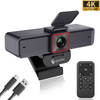
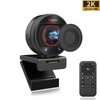
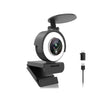
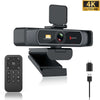
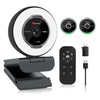

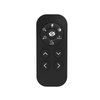
 Angetube 913
Angetube 913
 Angetube 866MAX
Angetube 866MAX
 Angetube 914pro
Angetube 914pro
 PTZ 4K 871Ai
PTZ 4K 871Ai
 Angetube 863plus
Angetube 863plus
 Angetube @60FPS 873Ai
Angetube @60FPS 873Ai
 Angetube 967Pro
Angetube 967Pro
 Angetube 967
Angetube 967
 Angetube 862pro
Angetube 862pro
 Angetube 920
Angetube 920
 Angetube 963
Angetube 963
 Angetube 962
Angetube 962
 Angetube 827
Angetube 827
 Angetube 628
Angetube 628
 Smart Notebook
Smart Notebook
 862Pro
862Pro
 863PLUS
863PLUS


